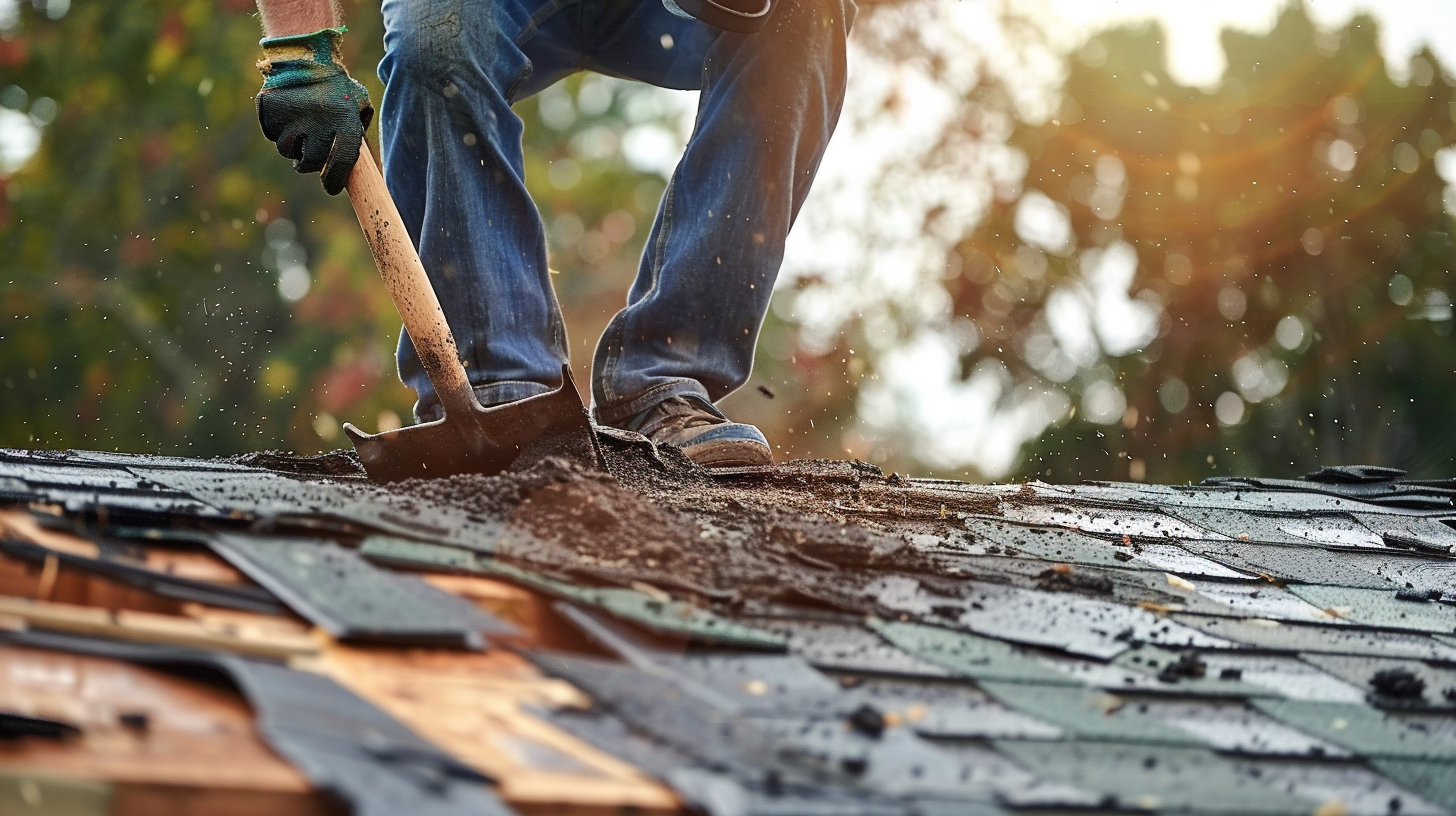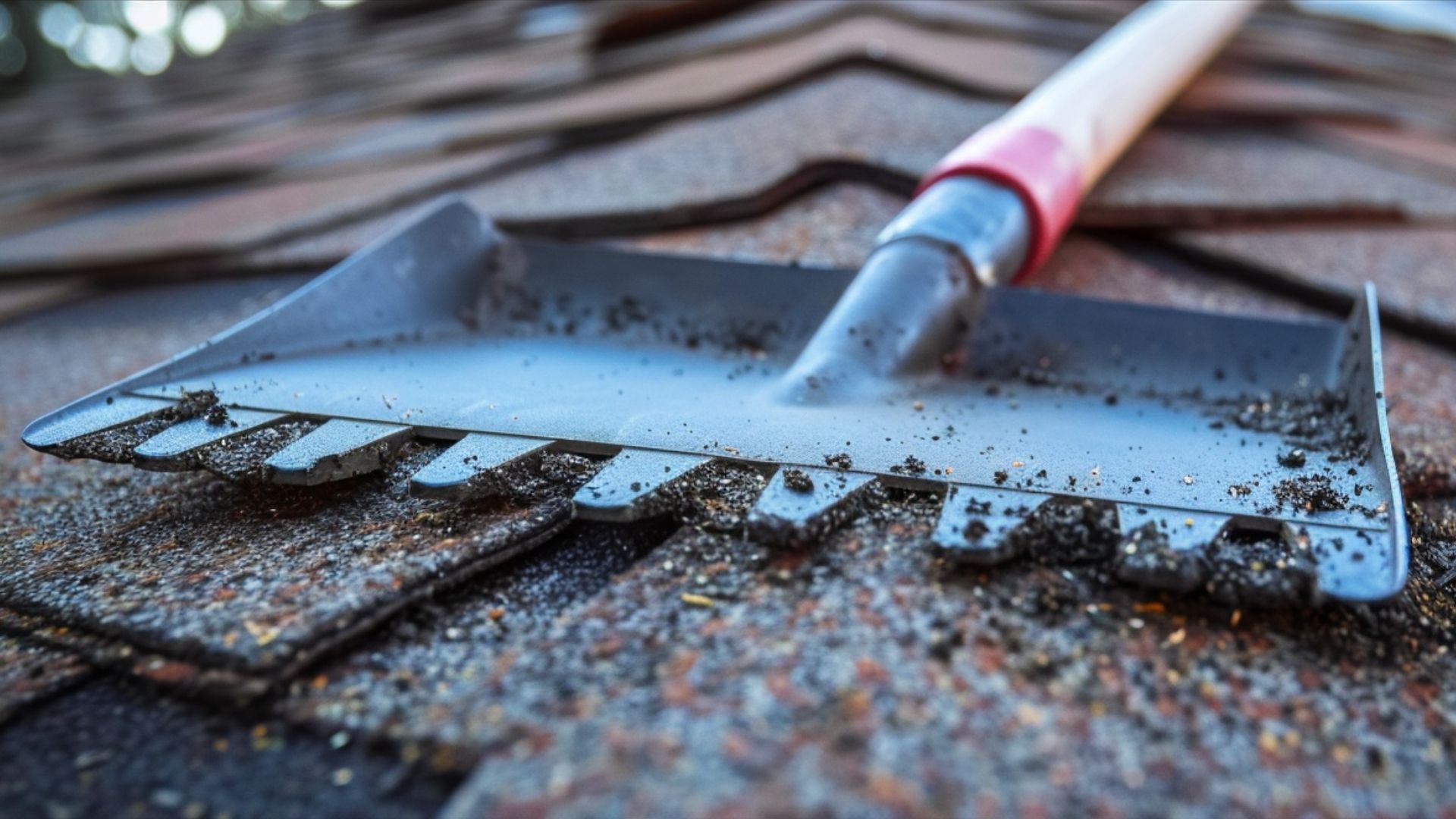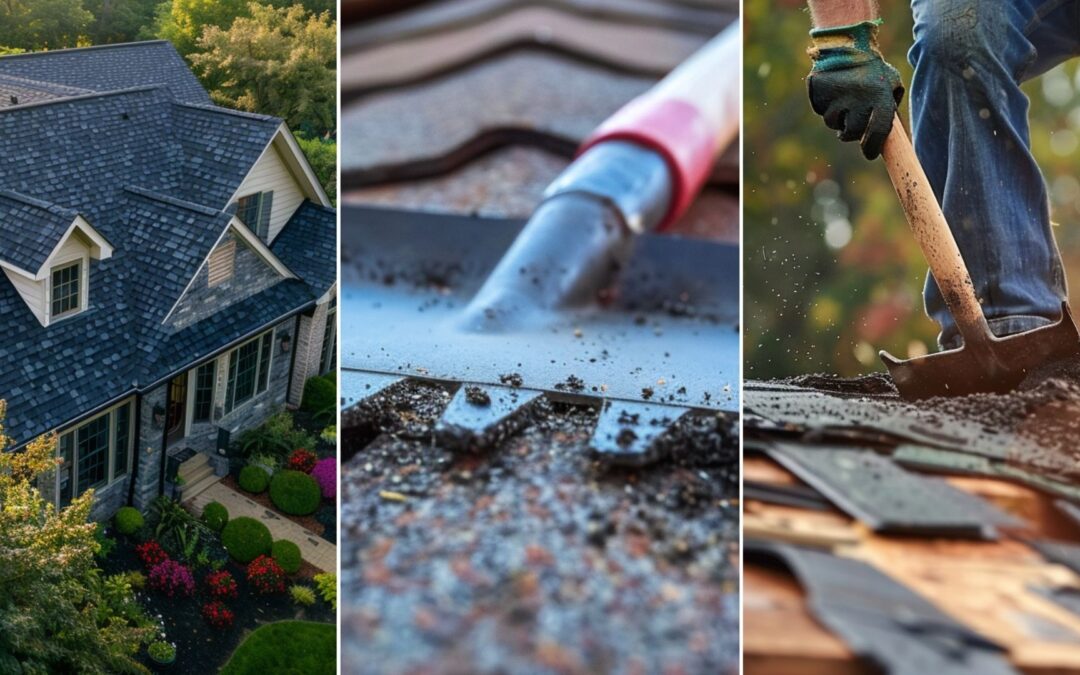Definition and Purpose of Roofing Shovels
Roofing shovels are engineered to quickly remove shingles and nails, thanks to their robust and durable design. Whether removing many roof shingles or cleaning up massive amounts of debris, roofing shovels provide the necessary functionality and durability to ensure a successful roofing job. The benefits of a roofing shovel are apparent, offering both efficiency and safety for any roofing professional. By using a shingle remover, contractors can avoid excess weight and strain, making their work more efficient and less physically demanding.

Roofing Shovel - Importance of Using the Right Tool - Sky Roofing Construction & Remodeling
Importance of Using the Right Tool for the Job

Roofing Shovel - Types of Roofing Shovels - Sky Roofing Construction & Remodeling
Types of Roofing Shovels
1. Flat Roofing Shovels: Flat roofing shovels are designed to remove gravel, nails, and other heavy debris from flat roofs. Their broad, flat blade and sturdy construction, such as an industrial-gauge steel blade, ensure efficient removal without damaging the roof surface.
2. Square Roofing Shovels: Square roofing shovels, shingle removers, or ripper shovels are commonly used to remove old shingles and nails. Featuring a square blade with sharp edges, these shovels eliminate large amounts of shingles quickly and easily.
3. D-Handle Roofing Shovels: D-handle roofing shovels are ergonomically designed with a comfortable grip, providing better control and reducing hand fatigue during prolonged use. These shovels are versatile and can handle various roofing tasks, including shingle removal and gutter cleaning. Many D-handle roofing shovels feature a 7-inch or forged steel blade for durability.
4. Roofing Rippers: Roofing rippers are specialized tools for separating shingles from the roof deck. With their hooked shape and sharp teeth, such as a serrated carbon steel blade, rippers easily grip and tear through shingles, making them an ideal choice for precise and efficient shingle removal.
5. Folding Shovels: Folding shovels are compact and portable, ideal for roofers who need to transport their tools efficiently. They often feature an adjustable head and a poly blade, ensuring versatility and durability.
By understanding the different types of roofing shovels and their advantages, readers can make informed decisions when selecting the right tool for their roofing projects. Some shovels have high-quality fiberglass handles and polyester veil coatings that enhance their durability and efficiency, ensuring long-lasting performance.
Fiberglass Handle vs. Steel Handle
Serrated Blade vs. Straight Blade
Poly D-Grip vs. Rubber Grip

Roofing Shovel - Features to Consider When Choosing a Roofing Shovel - Sky Roofing Construction & Remodeling
Features to Consider When Choosing a Roofing Shovel
1. Blade Design: The blade design is crucial when selecting a roofing shovel. Look for a shovel with a sharp, serrated blade that can effortlessly cut through roofing materials such as shingles, tiles, or asphalt. Options include a 20-inch wide serrated knife or a 9-inch serrated blade. A blade with different-length teeth, such as jagged or heat-tempered, can enhance cutting efficiency. Consider a shovel with an innovative wedge design or a tear-off shovel for specific needs.
2. Handle Material: The handle material of a roofing shovel significantly affects its durability and comfort during use. Opt for a shovel with a sturdy and lightweight handle made of materials like high-quality fiberglass or composite. These materials offer excellent strength while being lightweight, reducing strain on your arms and back during prolonged use. A 28-inch handle length is often ideal for residential applications.
3. Grip: A secure grip on the roofing shovel is essential for safety and control. Look for a shovel with a comfortable, non-slip grip that provides stability and prevents accidents while working on sloped roofs or challenging angles. A shovel with a fiberglass handle can also provide a robust design and comfortable grip.
4. Weight: Consider the weight of the roofing shovel, as it can affect your ability to maneuver and control the tool effectively. A lightweight shovel is ideal for reducing fatigue during extended periods of use, allowing you to complete roofing tasks efficiently. Options such as a shovel multi-tool or a roof gutter cleaning shovel can provide versatile and lightweight solutions.
5. Durability: Roofing projects can be demanding, so selecting a durable and reliable roofing shovel is essential. Look for shovels made from high-quality materials that can withstand the rigors of removing old roofing materials without breaking or bending. Options include a durable steel blade, a design with steel prongs, or an RA-001 carbon steel shovel. Ensure the shovel is free from defects in material, and consider models like a metal shovel or a shovel with a cover for added protection.
By considering these features when choosing a roofing shovel, you can ensure that you have the right tool for the job and maximize the efficiency, safety, and durability of your roofing construction projects. Clever designs and robust materials will contribute to the longevity and effectiveness of the tool.
Ergonomic Design for Maximum Comfort
Blade Width and Length Options
Handle Length and Material
Enhance Your Roofing Project with the Right Roofing Shovel
A roofing shovel is an indispensable tool for any roofing project, ensuring efficiency and safety when removing old materials. To experience the benefits of using the right tools and receiving top-notch roofing services, contact Sky Roofing Construction & Remodeling today (https://skyroofingconstructiontx.com). Schedule your quality roofing installation by calling us at (210) 942-9797. Our team is ready to provide exceptional service and ensure your roofing project is completed with the highest standards of professionalism.
Arthur McCain is a dedicated contributor to Sky Roofing Construction & Remodeling, focusing on the latest roofing materials and innovative construction techniques. With a background in architectural design, Arthur brings a deep understanding of how modern materials can enhance both the durability and aesthetic appeal of roofing projects. His articles offer readers cutting-edge insights into selecting the best materials for their homes.

